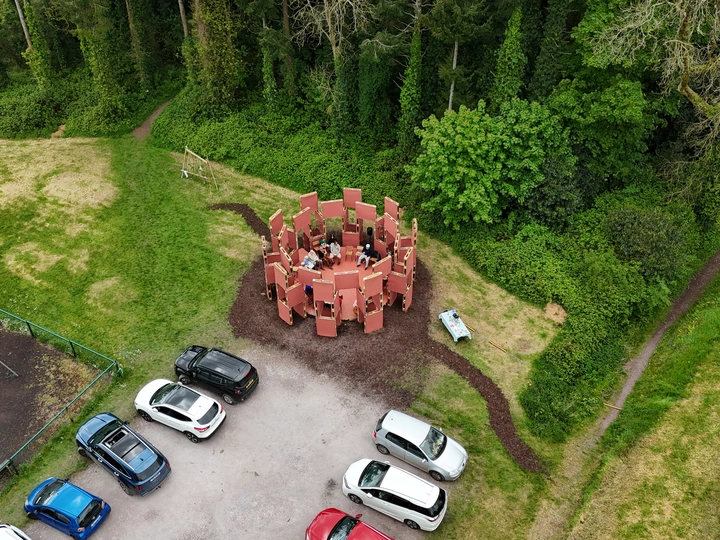Seeing the Wood for the Trees

Philip Ryan
Nocht Studio, founded in 2018 by Martin McGloin and Philip Ryan, is a collaborative art practice exploring and articulating ideas outside traditional architectural practice. Both founders graduated from the Dublin School of Architecture in 2013 and have extensive experience in architecture, design, and construction across Ireland, the UK, the Netherlands, and Germany.
Nocht Studio’s body of work predominantly delves into the concept of self and other through perceived human experience in both physical and digital realms.
The studio utilises mediums such as light, sound, music, and film to create interactive installations and crafted objects. Their methodology, "research through making," underscores their practice, emphasising the ethical use of resources and nature-first decision-making principles.
Notable projects include:
The Seed Pavilion: A pop-up structure in Glenbower Wood, adopting nature-first principles and engaging the community through participatory research and expert collaboration.
The Random Project: An ongoing research initiative exploring the themes of randomness and gambling, reflecting on societal behaviours and the human condition.
Narcissus: A series of sculptures examining human interaction with ambivalent technology and its manifestation in daily life.
Martin and Philip’s innovative approach has led to projects that are not only artistically engaging but also environmentally and socially conscious, fostering community interaction and ecological awareness. Philip is currently expanding his expertise by attending the 'Commissioning and Curating Contemporary Public Art' course at HDK-Valand Academy of Art and Design, University of Gothenburg, where he is exploring the public function of art. This professional development is enhancing Nocht Studio's ability to contribute meaningfully to public art discourse and practice.
"Seeing the Wood for the Trees" invites the Killeagh community in Cork, Ireland, to explore Glenbower Wood through artistic creation over three years. The project aims to foster continuous learning and growth, reflecting natural cycles.
The proposal originated from "The Seed Pavilion," a co-created pop-up pavilion for the May Sunday Festival 2024, commissioned by Greywood Arts. This project, based on nature-first principles, involved participatory research and expert collaboration, deepening our understanding of ecological and community needs. The project resulted in a structure that utilised timber pallets clad in cardboard that were coated with natural biodegradable paint that was infused with seed of common alder and downy birch. The pallets were undamaged in the assembly and were returned to the logistics ecosystem, while the seed boards were planted in the woodland, the local woodland tree nursery (established through the project) and taken by various individuals and groups to be planted off-site.
"Seeing the Wood for the Trees" will employ "research through making" to examine ethical resource use in art amid the climate crisis, focusing on nature-first decision-making. The project will address themes of ownership, belonging, stewardship, biodiversity, and climate justice, potentially discovering new collaborative opportunities through art.
A key focus will be on managing invasive species, particularly Cherry Laurel. We aim to transform this challenge into an asset by exploring its use in creating objects or infrastructure, like furniture. This approach not only addresses ecological concerns but also fosters community engagement and artistic innovation.
The project's goal is to help the community explore its identity and relationship with the woodland, emphasising communal ownership and stewardship. By strengthening cultural and ecological bonds, we aim to contribute to the vitality and resilience of Killeagh's natural heritage.